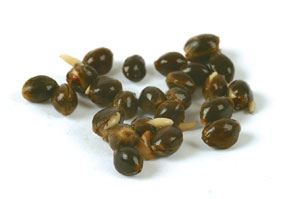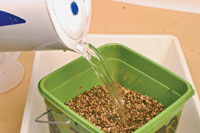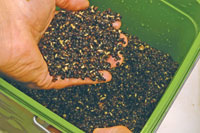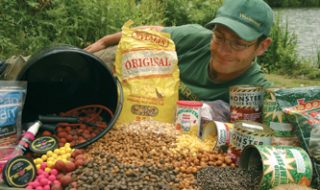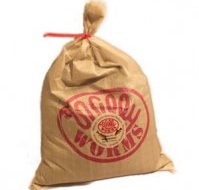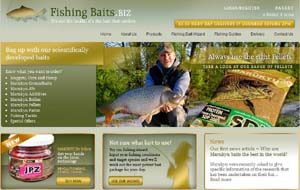Presenting The Hook Bait
When fishing seed on the hook, tcf advises fishing the pole if you have one, as it will allow you to fish the fine tackle that will see you achieve the most bites and allow you to present the bait correctly.
What you should be doing is fishing a rig with a strung-out (shirt-button style) shotting pattern and laying it out across the water, holding it on a tight line to the pole tip, so that the float settles gradually as the shots register.
Set the rig so that you are fishing the bait an inch off the bottom – just as the bait reaches those last few inches is when you can expect to get your bites. Just lowering the rig down and leaving the bait stationary will see you getting far less action.
Hemp And Tare Tackle
Floats in the 4×10 to 4×12 range are ideal for canals and drains, and on deeper stretches of river you might need a 4×14 float, but not much bigger.
Hook choice is very important. The pattern you choose should have a wide gape that makes it easy for you to hook the seed and position it at the back of the bend with plenty of the hook point showing. A size 18 fine-wire, wide-gape hook is perfect for hemp, while a tare can be fished on a size 18 or 16 hook.
Use light lines too – a typical hemp rig used by match anglers for roach would incorporate a very light 0.07mm hooklength or 0.08mm if you really get them going. For hemp fishing in winter, many anglers use a gossamer 0.06mm hooklength.
Of course the key to fishing this light on the pole is balancing your tackle, and light elastics from No2 to No4 are advised.
If you fish hemp on the waggler you need a very soft-tipped rod and we wouldn’t advise fishing lighter than a 0.08mm hooklength. If you are expecting chub on rivers, you need to step up this kind of tackle up considerably.
Hitting Your Bites
The great thing about fishing hemp is that when you get fish going on it, bites are fantastic. It pays to leave plenty of the float bristle showing so that you are not tempted to strike at little dabs on the float. What you’re looking for is a slow, positive bite that sees the float tip just keep on going.
Commercial Fisheries
A noted tactic in the cooler months is to fish a grain of sweetcorn over a bed of hemp, fed accurately using a pole pot. The hemp attracts with its aroma, while the sweetcorn is very visual bait on the bottom. The great thing about hemp in these situations is that it does not seem to overfeed the fish at a time when they aren’t very active.
The same method also works in summer, but as the fish are more active you may need to feed more grains of sweetcorn in with the hemp to hold fish in your swim. Another good hook bait to fish over hemp on commercials in summer is luncheon meat.
As tcf’s editor shows in the feature at the end of this guide, hemp is also brilliant when you want to target silver fish on waters holding a lot of other species. Hemp on the hook will usually get you more bites from roach, but if you can get fish going on tares they will pick you off a better stamp fish and you are in for a great day. The trick with this kind of fishing is to keep hemp loose fed, trickling in by hand or catapult.
Canals And Drains
These venues are noted for having plenty of very small roach, and hemp is a good way to pick off the bigger roach.
There are two schools of thought on how to get a hemp swim going on this kind of venue.
The first is to keep trickling in the hemp six to 12 grains at a time until the fish start responding to it. This can take a couple of hours, but once they do, you can bag up in double-quick time. It’s also a technique that can work well on slow-moving stretches of river.
A popular technique on the drains in the east of the country is to put in a big pot of hemp and a pinch of casters at the start of the session and start fishing on another line.
Every so often you can try over this line with a caster on the hook and as soon as you get a quality roach, you switch to fishing the seed.
River Fishing
For chub, hemp is best fed with casters, but you need to feed the baits separately. Hemp is heavier than casters and sinks quicker, so should be fed slightly downstream to ensure it reaches the bottom in the same area.
Make sure you take plenty with you, as you need to feed regularly, once every cast on some venues, and most of that will wash past fish until they start to feed.
Chub will readily take tares as they chase the feed and using them is a good way of avoiding problems with bites from bleak and minnows. Use stronger line and a stronger than normal hook if you are expecting chub.
Hemp For Barbel
Many of today’s barbel anglers feed hemp feed using bait droppers to create a tight bed of feed in areas where they know fish patrol. This sort of angler will often wait a couple of hours until fish are really feeding confidently over the bait before putting a hook bait such as a boilie down over the feed.
Another good bait to fish on rivers in conjunction with hemp is cubed luncheon meat. On many rivers the barbel and chub will not take a stationary piece of meat, but if it’s rolling through the swim under a float or freelined (called ‘rolling meat’) it can still be deadly.
Gravel Pit Fishing
Many gravel pit specialists use a lot of pigeon conditioner (Red Band is popular) along with hemp as a very cheap particle feed.
This should be soaked for a couple of days and boiled separately to the hemp. Once boiled, leave it to stand for a couple of days and the conditioner will start to ferment and give off and very strong aniseed aroma that carp in particular go mad for. It also goes very slimey in the process and the goodness seeps out, and when fed this creates a very attractive, hanging, milky cloud in the water that can draw fish in very quickly.
Our advice would be to mix in about one part cooked hemp to five parts cooked pigeon conditioner before feeding either by hand or catapult in the margins or using a spod at distance.
Maize popped up a couple of inches is excellent fished over the top of this, or go for a boilie approach. Another excellent hook bait is a tiger nut.
If there is a glug to go with your chosen hook bait boilie, a good tip is to add some of this glug to the hemp as you cook it.
How Much To Feed?
Some anglers feed up to five kilo’s of this stuff at once. A slick will form straight away as oils are released into the water (creating an obvious flat area of water) and then disappear. But one of the great things about this heavy-particle approach is that big fish will give away when they get their heads down, because as they do, more oils are released and a slick will form again
Be aware that on some waters fish can become preoccupied with the seeds and if they do you’ll struggle to get a bite on anything else. One trick if this happens is to fish a ball of hemp using Kryston Bogey.
How To Cook Hemp In The Flask
You can cook hemp on the stove, of course, but it makes an almighty stink and is likely to result in you falling out big time with she who must be obeyed. The flask method is ideal, as long as you don’t need to prepare a large amount, and will keep you in the good books.
|
|
||||
|
|
||||
|
|
How To Prepare Hemp In A Sealed Bucket
This is another method that won’t result in divorce proceedings and is tcf’s choice if you have to prepare more than a pint or so at a time. The keys to the method are using a bucket with a reliable, sealable lid, and getting things started at least a day before you intend to use it.
|
|
||||
|
|
||||
|
|
How To Hook Hemp
In The Shell
This is the simplest, and quickest, way to hook a grain of hemp, but you must choose a grain that can only be opened by squeezing the grain. Don’t expect to catch lots of fish on one grain with this method.
 |
| Step 1 Pick a slightly undercooked grain that you can only open up by squeezing the shell. |
 |
| Step 2 Push the back of the bend of the hook into the opening, and let go. |
 |
| Step 3 The grain should grip the hook. Note that you need to have plenty of the point showing. |
The Knot Picker
Although more fiddly, in our opinion this is a better method than using the shell to grip the grain because the hook is gripped very firmly and you can catch several fish on one grain of hemp.
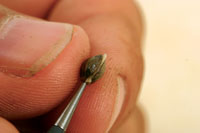 |
| Step 1 Pierce the blunt end of a slightly undercooked grain using a knot picker. |
 |
| Step 2 Push the point into the opening you’ve made and turn the grain onto the hook. |
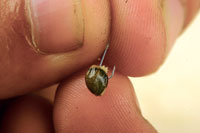 |
| Step 3 Push the point out of the opening and push round until it sits at the back of the bend. |
On The Hair
Certainly the fiddliest of all and it’s quite possible to break a few grains before you get this right. Once you do, you have a grain of hemp that could last you a whole session.
 |
| Step 1 Find a large, undercooked grain and push a needle from the blunt end all the way through. |
 |
| Step 2 Thread on some white cotton and pull one end through the grain. |
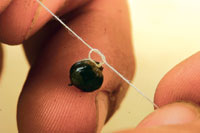 |
| Step 3 Tie a double overhand knot to secure the cotton around the grain. |
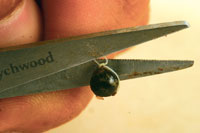 |
| Step 4 Pull the knot tight before trimming off the loose ends, tight to the knot.
|
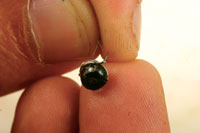 |
| Step 5 To hook, simply tuck the point under the cotton and turn to the back of the bend. |
How To Make Liquidised Hemp
Feeding liquidised hemp can be very effective when roach, in particular, are your target on clear canals, rivers, stillwaters and drains. You’ll need some cooked hemp and a liquidiser.
|
|
||||
|
|
||||
|
|
||||
|


